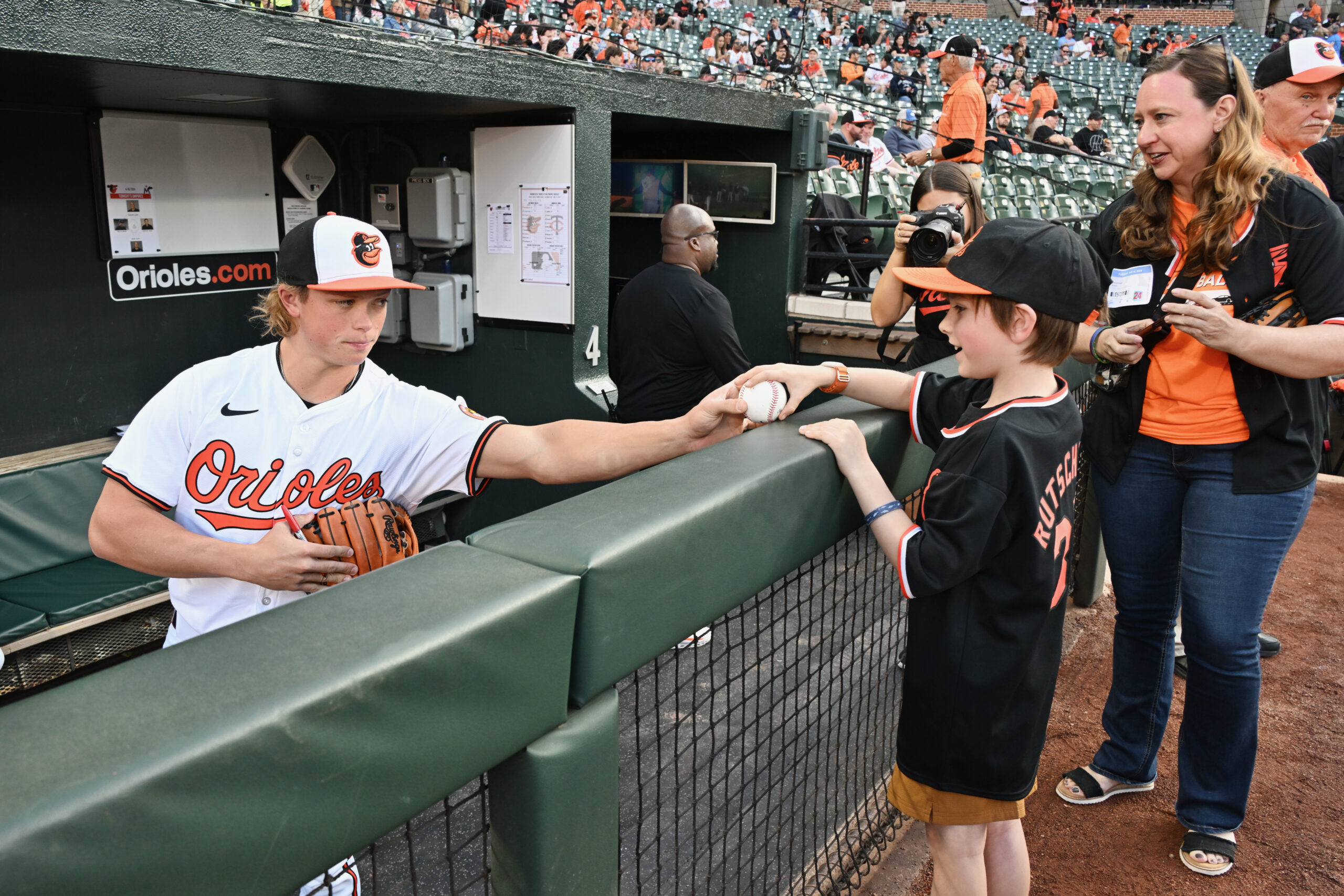Jackson Holliday’s demotion to the minor leagues on April 26 came amid his historically futile start at the plate in the majors.
Drafted first overall by the Baltimore Orioles in 2022, Holliday coasted through the organization’s lower levels and was summoned this year on April 10 to the big league club for the first time.
But the hype that engulfed Holliday’s major league debut gradually dissipated amid the prized prospect’s treacherous first stint at the top level.
Holliday collected just two hits over his first 34 major league at-bats — the fewest hits by a No. 1 overall pick in that window — before being sent down to Triple-A Norfolk.
The 20-year-old’s struggles were surprising considering how well he mashed minor league pitching.
Holliday batted .321 in 155 minor league games before hitting just .059 during his 10-game stint with Baltimore. No position player drafted first overall had a larger negative difference in their career minor league batting average and their average across their first 34 major league at-bats.
“He got very intense, very specific feedback from major league pitching,” Orioles general manager Mike Elias told reporters on April 26.
“He’s a brilliant talent and a very sharp kid, and I expect he’s going to go and implement those adjustments really quickly,” Elias said, “but we felt that steady playing time in Triple-A was the place for that.”
Holliday’s rough stint with Baltimore came after he made a strong case to immediately begin the 2024 season in the major leagues.
He hit .311 with two home runs for the big league club this year during Spring Training but was sent to the minor leagues for about the first two weeks of the season. Elias said the left-handed hitter needed to gain more experience against left-handed pitchers.
Hindsight suggests the former No. 1 pick may have needed even more time in the minor leagues before being promoted to the majors. However, history says Holliday’s struggles had little to do with his minor league experience.
Capital News Service found minimal correlation between the number of at-bats a top pick had in the minor leagues before playing in an MLB game and the number of hits they had over their first 34 big league at-bats.
Holliday registered 583 minor-league at-bats before his MLB debut, the 11th-fewest among the 37 position players ever selected first overall.
“We moved him very fast in the minors, but it’s because he was doing so well,” Elias said. “We were trying to get him to a spot where he (was) challenged.”
Every top pick besides Holliday had at least four hits over their first 34 MLB at-bats, but more minor league at-bats didn’t promise immediate success in the majors.
Dave Roberts went straight to the major leagues after being drafted first overall by the San Diego Padres in 1972 and collected eight hits in his first 34 at-bats. Meanwhile, Phil Nevin had half as many hits as Roberts despite logging over 1,100 minor league at-bats before making his MLB debut for the Houston Astros in 1995.
Holliday simply looked overmatched at times against major league pitching.
Half of his swings resulted in misses, a rate double the major league average. Holliday struck out in exactly half of his 36 plate appearances for Baltimore, well above the league rate (22 percent) and his rate in the minor leagues (19 percent) prior to his MLB debut.
“Whenever you’re struggling a little bit, you just start searching,” Holliday said in an article published on April 23 by The Athletic.
“ … It’s a lot more difficult than Triple-A. I don’t think there’s very many people in the big leagues who haven’t struggled. It just happens to be at the beginning.”
Holliday faltered for the Orioles especially when chasing pitches, or swinging at offerings outside of the strike zone. His chase rate mirrored that of the typical MLB hitter, but his 27.2% contact rate on chase swings was well below the league average of 57.9%.
He was also more passive at the plate than the typical MLB batter. Holliday swung 7.8% less frequently than the average hitter, including 11.7% less often on pitches inside the strike zone.
“This game up here, people attack your weaknesses until you stop showing them to be weaknesses,” Elias said. “And he kind of knows what that attack looks like right now, and hopefully we’ll be able to concentrate his work on some of those areas.”
The timetable for Holliday’s return to the major leagues is uncertain, though some within the Orioles organization believe he will not be down in the minor leagues for very long.
“I think he’s one of the most mature people I’ve met,” Baltimore infielder Jordan Westburg said, per MASN Sports. “ … It wouldn’t surprise me if this is just a short stint to get some confidence back, get some (at-bats) and come back up here and really help this club.”
Elias praised Holliday’s “growth mindset” and said he doubts that the Orioles’ top prospect is dwelling on his underwhelming big league debut. The general manager is confident that getting Holliday extra repetitions in the minor leagues will pay off when the acclaimed infielder returns to the big stage.
“He’s going to be putting work in,” Elias said, “but he also will be ready for whenever his name is called.”

